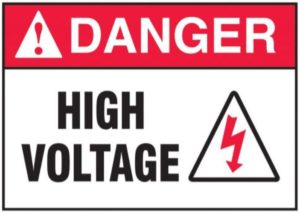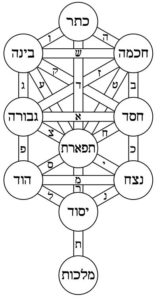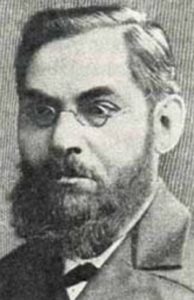As we continue to celebrate the holiday of Chanukah, it is important to remember that Chanukah is not about physical light, but about mystical light. The light of Chanukah is associated with the Or haGanuz, “the concealed light” of Creation. As we learn from Genesis, the primordial divine light shone for 36 hours, which is why we light a total of 36 candles over the course of Chanukah. While we’ve discussed this concept in detail in the past, we have yet to address the big question: what exactly is the Or HaGanuz? What is its nature and true purpose?
The answer to this is possibly the deepest and most concealed secret in all of Judaism. To my knowledge, it has never been publicly discussed or expounded upon. In fact, prior to the last two centuries or so, there was no way for even the most learned scholar to truly understand it. What follows is an attempt to address several ancient mysteries and synthesize one compelling—undoubtedly unconventional—answer. (Proceed with caution, and please read to the end.)
Adam’s Lost “Light”
Our Sages tell us that Adam and Eve originally glowed with the primordial divine light, and through that mystical light “could see from one end of the universe to the other” (see, for instance, Chagigah 12a). This is the first big mystery: what does it mean to able to see across the universe? How could the primordial “light” allow them to do so?
As we know, Adam and Eve later lost their glow. At the same time, they noticed that the days were getting shorter and shorter (since they were created in Tishrei, at the start of autumn). The Talmud says that they thought darkness would soon engulf the entire universe (Avodah Zarah 8a). Ultimately, this was not the case, of course, and the days started to lengthen again. In celebration, Adam and Eve actually instituted an eight-day festival of lights! This original eight-day festival was a quasi-Chanukah that Adam commemorated in his own way, since it predated the Maccabees by millennia. Of course, this is only a surface reading of the Talmud. We must understand that on a mystical level, Adam commemorated an eight-day Chanukah with the very same spiritual purpose. What was that purpose?
In some ways, the answer to this question lies at the very core of the Kabbalah of the Arizal (Rabbi Itzchak Luria, 1534-1572). The Arizal unified and systematized all of the Jewish mysticism that predated him into one clear and consistent worldview. This worldview is presented in the monumental Etz Chaim, as recorded by his primary disciple, Rabbi Chaim Vital (1543-1620). Here, the Arizal explains that Adam actually lost 378 spiritual “lights”. These lights composed the “garments” that enclothed the eight Sefirot from Binah down to Malkhut. God created these unique lights in order to protect the eight Sefirot from the forces of evil, who would otherwise draw sustenance and power from them. When Adam consumed of the Fruit, these lights were lost, leaving the eight Sefirot “naked” and unguarded, exposed to the forces of evil.
According to the Arizal, to restore the original, perfect world, and to defeat evil, we must reactivate those lost “lights”, and “reclothe” the eight Sefirot from Binah to Malkhut. This concept permeates every part of the Etz Chaim, and is mentioned dozens, if not hundreds, of times throughout the text. It relates to all kinds of mitzvot, such as prayer, havdallah, and circumcision, as well as the eight days of Chanukah, where each day corresponds to one of the eight Sefirot (and its corresponding garment). The Arizal says that this is the true meaning of Adam’s lost “light”, and the mystery of the Or haGanuz, the concealed light of Creation. He derives the number of lost “lights” as being 378 from the gematria of the unique term that represents the hidden force protecting the eight garments. The term is sometimes referred to as chet-semel (ח-שמל), literally “eight garments”. More accurately, it is a singular word, the mere mention of which would send shivers down a learned Jew’s spine in times past: chashmal (חשמל).
What is Chashmal?
The word chashmal first appears in Ezekiel’s Vision of the Merkavah, God’s Divine Chariot. So frightening is this word that the Talmud states people would avoid studying Ezekiel so as not to bring mention to it (Chagigah 13a). We learn that “There was once a child who was reading at his teacher’s house the Book of Ezekiel, and he apprehended what chashmal was, whereupon a fire went forth from chashmal and consumed him.” This precocious boy-wonder had the wisdom to truly grasp chashmal—and paid for it. The Sages then wanted to “suppress the Book of Ezekiel” entirely. However, they concluded that it isn’t dangerous for the average person to read, since they wouldn’t grasp chashmal anyway. Even most Sages wouldn’t really be endangered by it, and so it remained in open view.
In fact, the Talmudic Sages go on to offer various opinions as to what chashmal might be, trying to determine why it is so dangerous! This speculation continued throughout the generations. Various great rabbis gave their own explanations for chashmal. In nearly all cases, these are metaphorical or spiritual descriptions. Often, the conclusion is simply that chashmal must be some type of angel (this is how the Rambam holds in the opening chapters of his Mishneh Torah).
The Ba’al HaTurim (Rabbi Yakov ben Asher, 1269-1343) offered a little more, relating chashmal to some kind of concrete force. Incredibly, he says that the Ark of the Covenant was powered by chashmal. This is alluded to when the Torah says vayehi binsoa ha’aron, “And it was, when the Ark set forth…” (Numbers 10:35) where the word binsoa (בנסע) in Atbash rearranges to form chashmal (חשמל)! In other words, the Ark sets forth and moves by chashmal. The Ramak (Rabbi Moshe Cordovero, 1522-1570) would later explain that chashmal is one of the thirteen supernal kochot, “powers” or “forces” of the highest Heavens (see Pardes Rimonim, Gate 1, Ch. 7). Meanwhile, the Zohar (I, 100b, Sitrei Torah) adds that chashmal is the source of prophecy, and what allowed the prophets to see their visions.
The Arizal may have been the first (perhaps since the boy in Chagigah) to truly grasp chashmal. While he speaks of chashmal countless times throughout his teachings, this is only on the more basic level described above (ie. the relationship between chashmal and the eight garments that protect the eight Sefirot from Binah to Malkhut). The real secret of chashmal is not expounded upon. Rabbi Chaim Vital only dared to speak of it once, briefly, in a single sentence in Sha’arei Kedushah (Part III, Gate 6), stating [emphasis mine] “This is the most sublime secret of chashmal… that it is the vessel and the physical substance of the lights of the angels. May God forgive me for revealing this most sublime secret.” Rabbi Vital could speak no more of this, only to reveal to us that chashmal is the very substance (חומר) that gives the angels power. Before him, the Ramak had similarly stated that chashmal is a physical force that “carries” and “gives life” to the angelic Chariot (Pardes Rimonim, Gate 12, Ch. 4).
Putting it all together, this is what we know so far of chashmal: It played a key role in the early days of Creation. Adam used it to see across the universe. It is a “force field” of sorts that guards the Sefirot. It powered the Ark of the Covenant. It can be used to generate visions. It gives power to the angels, particularly those associated with God’s “Chariot”. And it isn’t entirely spiritual, but has a clear physical aspect. To complete the analysis, we need only look in one more place: the original source of “chashmal”—Ezekiel’s Vision.
Elektron
The first chapter of Ezekiel describes the prophet’s incredible vision of God’s Chariot. The description begins thus:
And I looked, and, behold, a stormy wind came out of the north, a great cloud, with a fire flashing up, so that a brightness was round about it; and out of the midst thereof what looked like chashmal, out of the midst of the fire. And out of the midst thereof came the likeness of four living creatures. And this was their appearance: they had the likeness of a man. And every one had four faces, and every one of them had four wings. And their legs were a straight leg; and their foot was like a calf’s foot; and they sparkled with what looked like polished brass. (Ezekiel 1:4-7)
 Out of the sky comes something like a cloud with flames coming out of it. A bright light all around. Whatever Ezekiel sees has four wings. It has one “leg” coming out the bottom. The leg appears to be made of some kind of metal. It has a foot that resembles a calf’s cloven hoof. Ezekiel continues to say that these “creatures” had what looked like “burning torches” coming out their bottoms. Also at their bottoms were “wheels within wheels” (v. 16) which allowed them to move without having to actually turn.
Out of the sky comes something like a cloud with flames coming out of it. A bright light all around. Whatever Ezekiel sees has four wings. It has one “leg” coming out the bottom. The leg appears to be made of some kind of metal. It has a foot that resembles a calf’s cloven hoof. Ezekiel continues to say that these “creatures” had what looked like “burning torches” coming out their bottoms. Also at their bottoms were “wheels within wheels” (v. 16) which allowed them to move without having to actually turn.
Every person should really go through this chapter carefully, word-by-word, and try to envision what Ezekiel saw as accurately as possible. It suffices to point out only that he sees metal “hooves” that shoot forth fire, along with “straight, conjoined wings” (meaning, these are not at all the “angelic”, bird-like, curved and feathered wings that we tend to think of). It has “wheels within wheels”—gyroscopes—at the bottom, reminiscent of the gyroscopes on our own International Space Station. (The gyroscopes on the ISS keep it in place in orbit, allowing it to move effortlessly, “without turning”.) Ezekiel also says that the “creatures” have a covering over their heads made of what looks like clear “ice” (v. 22). Keep in mind he probably would not have been familiar with glass.

Canadian astronaut Dave Williams installs a new gyroscope onto the International Space Station’s Z1 truss, during a six-and-a-half-hour spacewalk.
Most importantly, on several occasions Ezekiel describes them as moving like, or being powered by, “lightning” or “flashes of lightning”. Such statements would not have made sense to anyone until 1752, when scientists in France first confirmed that lightning was electricity. And this brings us right back to chashmal.
In Modern Hebrew, the word chashmal means “electricity”. Today, it is common to hear in Jewish circles that the Modern Hebrew chashmal has nothing to do with Ezekiel’s chashmal, which must have been something spiritual, and not electricity. In reality, the Modern Hebrew term is perfectly precise. It was first resurrected in 1878 by Yehuda Leib Gordon (1830-1892). Gordon was one of the major Hebrew poets of the “Jewish Enlightenment”. Having said that, he was born Orthodox and was something of a child prodigy, apparently knowing the entire Tanakh and much of Talmud by heart.
Aside from Ezekiel’s juxtaposition of “lightning” with chashmal, how did Gordon decide the word must be electricity? Linguists had pointed out that the word chashmal was highly connected to the word leshem (לשם) meaning “amber”. The thing about amber is that it can build up a large amount of static electricity. The ancient Greek philosophers were fascinated by it, and knew they could rub amber to generate sparks. The Greek word for “amber”? Elektros. This is where the term “electricity” comes from! And when Gordon looked in the Septuagint, the original Greek translation of the Tanakh, our own ancient Sages had translated chashmal as “elektron”. They knew the secret power hidden in that word. Chashmal is electricity, and that explains everything.
Divine Power
Throughout history, in cultures around the world, lightning was seen as a divine power, wielded by the gods. This is most obvious to us in the West through the classical depiction of Zeus and his thunderbolts. In the Torah, too (lehavdil), God’s descent to Earth is often accompanied by lightning, as in the Sinai Revelation and in Ezekiel’s Vision. Lightning is powerful, frightening, deadly, and comes straight from above—fit for the divine. But what if it could be harnessed? What if this force could be safely contained and put to use? Would man finally wield divine power?
This is precisely what the early electrical scientists believed. Galvani, Volta, Davy, and the other great names in electrical science all felt they were capturing the power of Heaven! They were fascinated by electricity and obsessed over it. Once they could harness it (thanks to Volta’s battery, and the technologies that followed), the potential to transform the world was limitless. Over a very short time period thereafter, life was forever altered. Using electricity, we now have the ability to fly in massive aircrafts, speak to people around the world instantly face-to-face and, yes, see across the universe with our telescopes.
It was Adam who first wielded the power of chashmal (before losing it) to “see across the universe”. The Ark of the Covenant moved by the power of chashmal—and so do many of our own vehicles today. The prophets received visions through chashmal, and today we can generate a whole array of (tele)visions with electricity. The eight Sefirot were protected by chashmal to repel evil, just as we use electrical fences to keep away intruders. And the “chariots” of the angels flew by chashmal, just as our own electrical machines traverse the skies, and far beyond into outer space. We have gotten so used to electricity that we totally take it for granted. We have forgotten that electricity is divine power. Mankind has harnessed the energy of the Heavens.
The more you think about it, the more it makes sense. What is it that powers our own bodies? Our hearts beat because of electrical pulses. Every motion we make with our muscles is caused by an electrical signal from our brains. Every thought carries a voltage. (Back in university, we would extract nerves from freshly-killed frogs, connect them to electrodes, and make the exact measurements!) Incredibly, the Arizal knew it, too, teaching that there is chashmal in the body, “in the secret of basar” (“meat”) and the gidim (“nerves”, as in the gid hanashe, or sciatic nerve, see Etz Chaim, Gate 49, Ch. 2). He then states that the brain is powered only through chashmal (המוח אינו יונק הוא רק מהחשמל), which is incredibly precise scientifically. Long before Luigi Galvani (1737-1798) found electricity in frog nerves, the Arizal had already taught it—though few understood what he was actually saying!
Electricity extends to the core of existence. The electrons that propagate electricity formed at the very beginning of the universe, before there were even any atoms. It is the electron that really brings an atom “to life”, so to speak, despite the atom being almost entirely empty space. All of chemistry is built on the interactions of electrons. What powers your body is the flow of electrons within the mitochondria of each of your cells. It is this “electron transport chain” that generates ATP, the body’s energy molecule. In short, you and I are alive because of electricity, and all matter exists due to electrical forces.
So why would our Sages call this force the Or haGanuz, the “hidden light”? (Note that in Pardes Rimonim, the Ramak explicitly refers to chashmal as the or nignaz, see Gate 24, Ch. 2.) What does electricity have to do with light? Scientifically, electricity and light are part of the same force, the electromagnetic force. While electrons themselves move relatively slowly, they propagate electrical energy in the form of electromagnetic waves, nearly at the speed of light itself. Light and electricity are two sides of the same coin.
The mathematical quantity that represents the relationship between light and electricity is known as the fine structure constant. (More specifically, it represents the strength of the interactions between photos and electrons, among other things.) Many consider it to be the most important number in science. The great quantum physicist Richard Feynman once said that any good physicist should have this number posted up on their wall and think about it all the time. The value of the fine structure constant is 1/137, usually given more simply as 137. In his book 137, Arthur I. Miller summarizes that this number is “exquisitely tuned to allow life as we know it to exist on our planet… physicists began referring to 137 as a ‘mystical number’.” (Pg. xvii) It just so happens that 137 is the gematria of “Kabbalah” (קבלה)—that term connoting the mysteries of Creation. And the deepest secret of Kabbalah, as we have seen, is chashmal!

Formula for the fine structure constant, fittingly represented by the letter alpha. The “e” in the formula refers to the charge of an electron; “c” is the speed of light. The “ε0” is the electric constant, defining how far an electric field can permeate in a vacuum. The “h” is for Planck’s constant, telling us how much energy a photon of light will have, based on its frequency. Everybody knows π, of course. The units for all the quantities neatly cancel out, resulting in a “perfect”, dimensionless number.
To conclude, electricity is that concealed force of Creation that makes life (and everything else) possible. It is that magical power that gives us the ability to do just about anything, with truly unlimited potential. Electricity has transformed our world more in the last two centuries (if not two decades) than all of the rest of human history combined. With electricity lie the secrets of the universe. To have spoken of this in the Talmudic era was impossible, and dangerous. Even in the times of the Arizal it was an unspeakable secret. Today, that is no longer the case. The veil has been lifted. And it has been right in front of our eyes all along, prophesied in our holy books centuries ago.
The Tanakh told us a day would come when Heaven would descend upon Earth. The two domains are destined to fuse. The Zohar (I, 116b) predicted that in the 6th century of the 6th millennium, the world would begin to prepare for the End of Days and the secret wisdom of the Heavens would “flood” the Earth. Things would accelerate even further after the 600th year. These dates refer to the Jewish years 5500-5600, corresponding to 1740-1840 CE, and beyond. And that’s exactly what happened.
The first true electrical device was the Leiden jar, invented in 1745, allowing us to finally “capture” electricity. In 1752, lightning’s electrical nature was confirmed. Around 1800, Volta invented the battery. By the end of that 6th century of the 6th millennium, there were telegraphs and light bulbs, too. Today, we can send robots to Mars and recreate the early moments of the universe in enormous particle accelerators.
Now that we, too, possess chashmal, the power of the angels, we are ready to welcome them back, as prophesied long ago. We need them more than ever.

This famous composite photo from 1899 depicts whom many consider to be the greatest electrician of all time, Nikola Tesla, sitting beneath twelve million volts in his Colorado Springs lab. Tesla once said “If you want to find the secrets of the universe, think in terms of energy, frequency and vibration.” He also said: “My brain is only a receiver. In the Universe there is a core from which we obtain knowledge, strength, inspiration. I have not penetrated into the secrets of this core, but I know it exists.”




Pingback: The Meaning of Tiferet | Mayim Achronim
Pingback: Why Kiddush on Wine? | Mayim Achronim
Pingback: Chanukah’s Electrifying Secret | Mayim Achronim